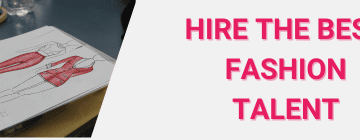Key Components of a Seamless Remote Hiring Process
Streamlining Virtual Interviews
Choosing the Right Technology: Select reliable video conferencing tools that offer high-quality audio and video, ease of use, and additional features like screen sharing and recording. Tools such as Zoom, Microsoft Teams, and Google Meet are popular choices.
Setting Clear Expectations: Clearly communicate the interview format, duration, and any technical requirements to candidates beforehand. Provide detailed instructions on how to access the virtual meeting and what they should prepare.
Creating a Professional Environment: Ensure that both interviewers and candidates are in a quiet, well-lit space with a professional background. This helps create a formal and focused interview atmosphere, even in a remote setting.
Conducting Online Assessments
Utilizing Skill-Specific Tests: Use online assessment tools to evaluate candidates’ technical skills relevant to the fashion industry. This could include design software proficiency tests, portfolio reviews, or creative problem-solving exercises.
Assessing Soft Skills: Incorporate assessments that evaluate candidates’ soft skills, such as communication, teamwork, and adaptability. Situational judgment tests and personality assessments can provide valuable insights.
Providing Clear Instructions: Ensure candidates understand the format, expectations, and deadlines for online assessments. Offer support and guidance if they encounter technical difficulties.
Enhancing Remote Onboarding
Creating a Structured Onboarding Plan: Develop a comprehensive onboarding plan that outlines the key steps and milestones for new hires. This plan should include introductions to team members, training sessions, and an overview of company culture and policies.
Utilizing Digital Tools: Leverage digital onboarding tools to facilitate the process. Platforms like BambooHR, Workday, and Trello can help manage tasks, track progress, and ensure new hires have access to necessary resources.
Fostering Connections: Encourage new hires to connect with their colleagues through virtual coffee chats, team meetings, and collaborative projects. Building relationships early on helps integrate new employees into the company culture.
Providing Remote Training and Development
Offering Virtual Training Programs: Design virtual training programs that cover essential skills and knowledge for the role. Use webinars, online courses, and interactive workshops to engage new hires and support their development.
Setting Clear Learning Objectives: Define specific learning objectives and outcomes for each training session. This helps new hires understand the purpose of the training and track their progress.
Encouraging Continuous Learning: Promote a culture of continuous learning by providing access to ongoing training opportunities, industry resources, and professional development programs.
Maintaining Communication and Engagement
Regular Check-Ins: Schedule regular check-ins with new hires to discuss their progress, address any concerns, and provide feedback. These meetings help ensure that new employees feel supported and valued.
Using Collaboration Tools: Implement collaboration tools like Slack, Microsoft Teams, and Asana to facilitate communication and teamwork. These tools help remote employees stay connected and engaged with their colleagues.
Building a Supportive Community: Create a supportive remote work community by organizing virtual social events, team-building activities, and peer mentoring programs. These initiatives help foster a sense of belonging and camaraderie among remote employees.
Conclusion
Creating a seamless remote hiring process for fashion roles involves streamlining virtual interviews, conducting effective online assessments, enhancing remote onboarding, providing comprehensive training and development, and maintaining communication and engagement. By implementing these strategies, fashion brands can attract and retain top talent, ensuring their teams are equipped to thrive in a remote work environment. Embracing remote hiring practices not only broadens the talent pool but also enhances flexibility and adaptability in the ever-evolving fashion industry.


